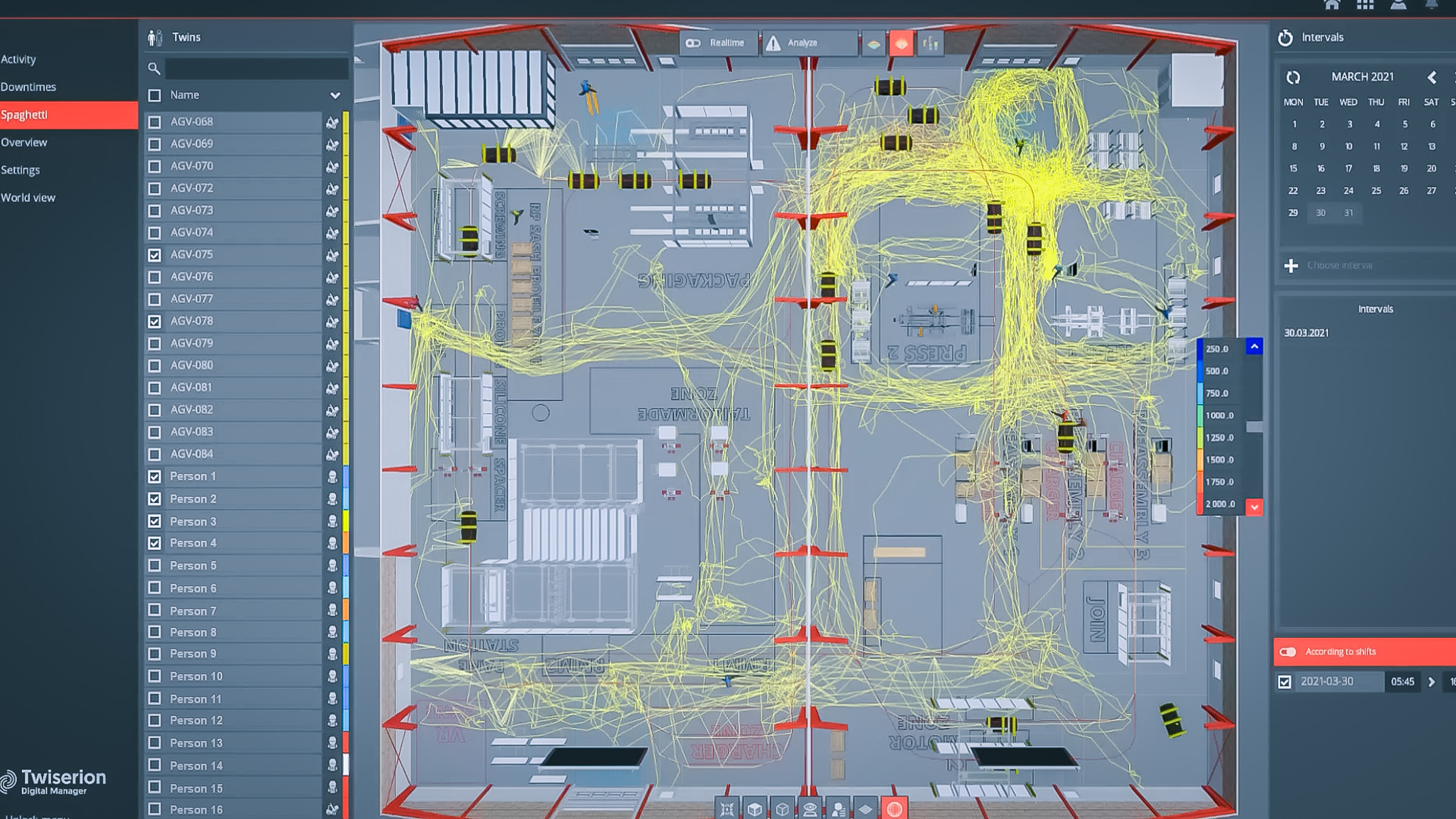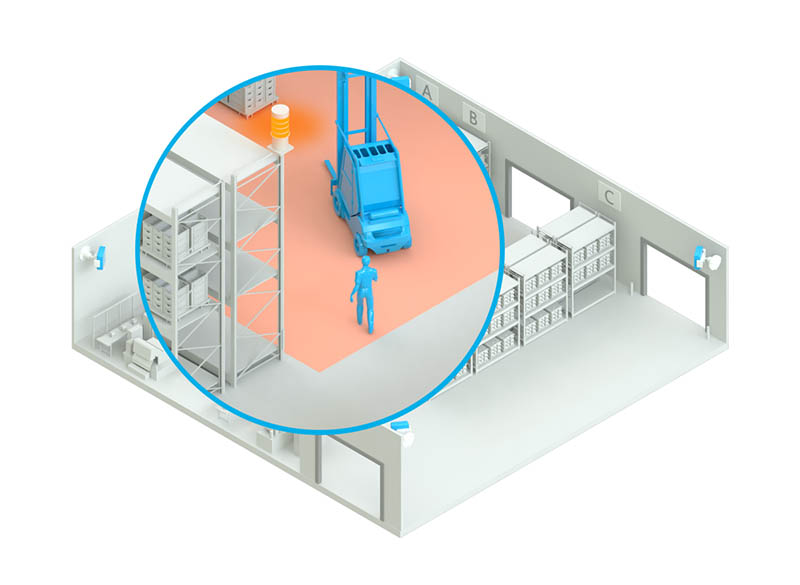Processes should be optimized constantly
Asseco CEIT recently launched its rebranded planning software Twiserion Design Manager. Twiserion Digital Manager is also part of its software portfolio.
How do the two work together and how do they differ?
Both solutions are part of our Twiserion platform and together they form a strong and vital part of the complete digital twin which helps customers not only monitor and plan, but also compare materials and logistics flows using online data. The symbiosis of these two products and the uniqueness of this solution lies in this mutual communication and exchange of data, which means bottlenecks are revealed in real time, thus resolving this defect effectively in the planning system.
Twiserion Design Manager is a planning software. However, for highly efficient planning, you need real data collected from your business. This is where Twiserion Digital Manager comes in, to provide this data.
Using these two systems, clients can achieve the level of Industry 4.0, namely a complete digital twin which can adjust and efficiently optimise production based on real data. Twiserion Digital Manager is used to monitor all items on the shop floor: operators, logistics technology, material, pallets as well as machines. A digital twin means that everything that happens in a business is automatically recast in the virtual environment, including the movements of machines and equipment which are involved in various process, operator movements and safety features.
What issues can Twiserion Digital Manager resolve in a production plant?
Our Twiserion Digital Manager platform focuses primarily on three main spheres of use. The first one I will mention is processing and monitoring data from the whole of the logistics fleet which show us the intensity of use of the technology and logistics routes. The second one is monitoring material, materials flow, work-in-progress and the online status of warehouse stocks. And the final main sphere is without a doubt safety and respecting safety regulations in terms of logistics technology and operators.
Why is it important to monitor logistics and the utilization of logistics routes in production?
Good question. It’s often the case that logistics lies behind the bottlenecks which can cause significant problems in achieving the product’s set lead time if the fleet’s efficiency is incorrectly set up, thus naturally increasing the operation and maintenance costs of this technology. Therefore, it is very important to know not only the given position of the logistics equipment, but also how to analyse it correctly. And this is where the digital twin comes in, which can monitor the real-time movement, analyse all the bottlenecks and offer additional tools to use the logistics and logistics route as efficiently as possible within the whole production plant.
What data does the client obtain by monitoring materials flows? Does Twiserion Digital Manager also cover work-in-progress?
If we look at the overall product quality, this is influenced by very many factors. From supply through logistics, correct production processes to quality control. But what if the material is accumulating in the warehouse or if you have disorganised work-in-progress, the material is not stocked as FIFO or it takes a long time to find the right material in your WIP? The materials flow and its actual visibility in the workshop have an essential impact on all this. Thanks to the Twiserion Digital Manager, we can manage the materials flow online, assess the number of pallets and material in stock and plan the whole production process, for example in e-Kanban format. We should also mention the very common case when operators have to look for products or orders too often on the shop floor, spending time which can then lead to an increase in the total lead time and increased costs.
How does monitoring employees contribute to their safety?
The area of safety is really quite a large one in terms of monitoring. The two basic aspects of safety are logistics technology in relation to the employees who are active in the space where logistics equipment moves around, or in zones which are fatally hazardous. People say “look twice before crossing safely”, but this is often underestimated during the daily routine. In borderline situation, it can lead to serious accidents or injuries. By monitoring movements in real time, our solution can inform the logistics operators, fork-lift truck operators as well as other employees of the risk of a collision. They receive this information either as an alarm on their tablets, or using light and sound signals. The system also deals with the safety of entering dangerous or forbidden zones, thus increasing employee safety in their daily movements.
Monitoring employees contributes to their safety in several ways. It reduces the direct threat of an encounter with logistics equipment by warning the fork-lift operators of nearby employees using an alarm (visual and acoustic). It is also possible to monitor employee movement in individual working zones, and thus using correct management and optimisation to reduce their presence, for example, in an area with high noise levels, or under long-term pressure from heavy loads in the workplace; the solution could be rotating employees between working zones. Or in the event of catastrophes such as a fire, it’s possible to find out whether all monitored employees are present at the assembly points. Checking this information would then take the supervisors or safety staff only a few seconds. Localising the absent employees is also then a question of seconds.
Can you tell us a bit more about UWB-based RTLS technology?
Industry places a high demand on the reliability and performance of exact monitoring within the production plant. The solution offered by a real-time location system (RTLS) based on ultra-wide band (UWB) technology meets these high demands. There is a wide range of technology for monitoring the indoor premises of the plant, but only UWB can provide the precision, scalability and reliability necessary for production planning processes where costs are counted by the minute. Unlike other monitoring systems, UWB achieves a precision of 30cm with unrivalled reliability even in a tough metal-working environment. This is why UWB is used by automotive plants such as Toyota, Volkswagen and others.
UWB technology has also been premiered on the consumer market, and since September 2019 appears as standard in telephones by Samsung, Apple and others.
Processes should be optimized constantly, so it is a continual process. However well you believe your processes are set up, there is always room for more optimization. Of course, this optimization is not always financially viable. But at Asseco CEIT, we are always able to give our clients advice.
Most of our projects are defined very strictly, for those clients who need to take into account not only the added value of technology in Industry 4.0, but mainly potential savings on processes or technology. Clients estimate the return on investment of the initial project as ranging between one and two years. However, projects carried out in premises already containing infrastructure covered by RTLS technology indicate a return on investment of under one year.



